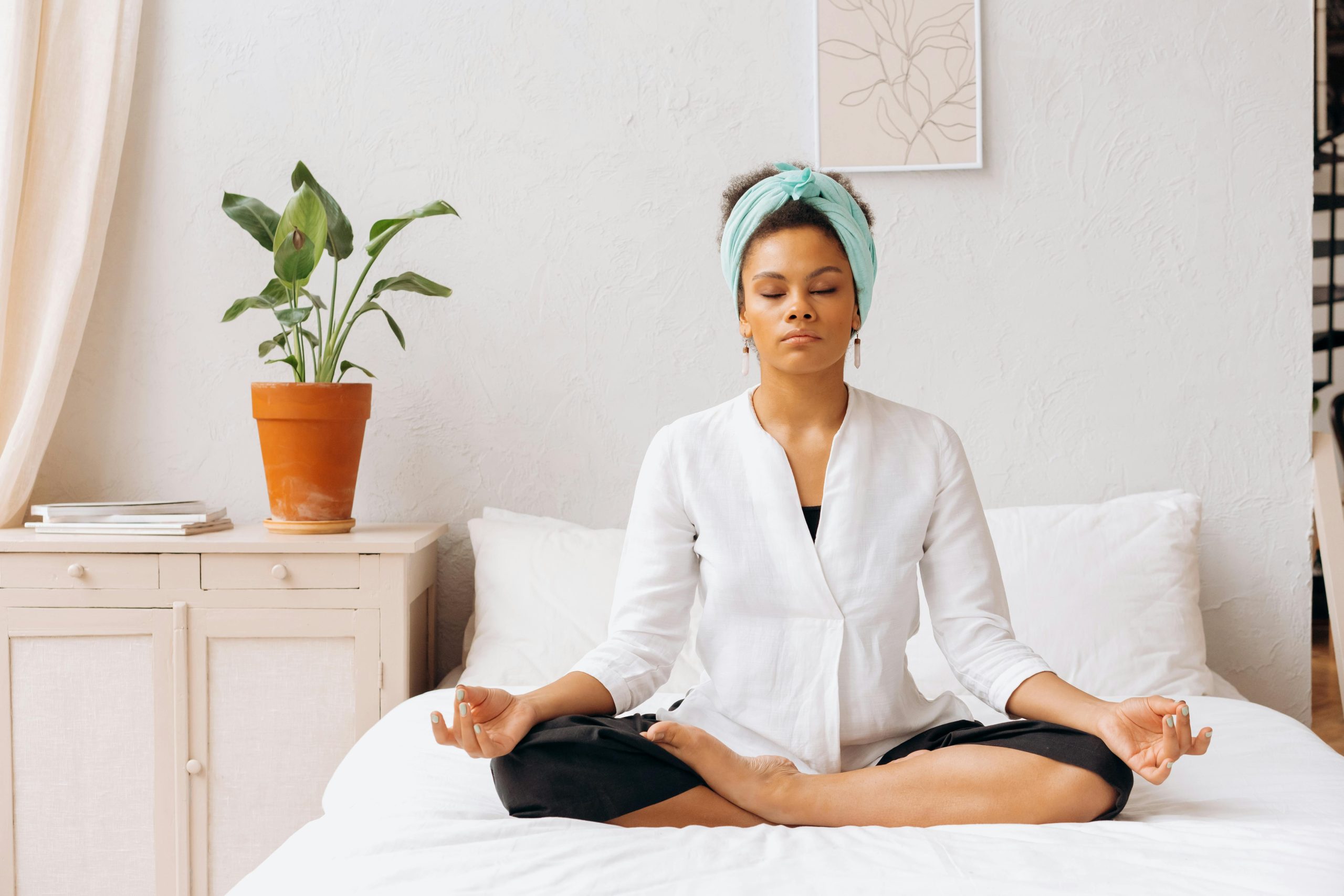Bedtitation: Enhancing Sleep through Mindful Bedtime Meditation
Bedtitation blends meditation and bedtime routines, aiming to calm the mind and prepare the body for restful sleep. As part of sleep hygiene, bedtitation can significantly improve sleep quality by integrating relaxation techniques just before sleep. (Sleep Foundation, 2024)
How Bedtitation Works
Preparation: Begin by creating a relaxing environment. Dim the lights, set a comfortable room temperature, and eliminate distractions. This sets the stage for effective bedtitation .
Timing: Schedule bedtitation right before your usual sleep time to develop a consistent routine. Regularity is crucial for training the body to associate this practice with bedtime .
Techniques:
- Mindfulness: Focus on breathing, bodily sensations, or a mantra to centre your mind .
- Body Scan: Mentally scan your body from head to toe, releasing tension in each muscle group .
- Visualisation: Imagine a serene place or scenario to promote tranquillity .
- Guided Meditation: Use apps like HealthNav to provide calming instructions, sounds or sleep casts.
Duration: Start with 5-10 minutes, gradually extending the time as you grow more comfortable with the practice .
Benefits of Bedtitation
Reduces Stress: Bedtitation effectively lowers cortisol levels, the body’s primary stress hormone. High cortisol levels, often a result of chronic stress, can disrupt sleep by increasing alertness and delaying the onset of sleep. Research shows that meditation can significantly reduce cortisol levels, leading to better sleep quality . According to a study published in Health Psychology, participants who practised mindfulness meditation had lower cortisol levels compared to those who did not
Promotes Relaxation: Engaging in bedtitation activates the parasympathetic nervous system, responsible for the body’s rest-and-digest response. This system counteracts the stress-induced fight-or-flight response, promoting relaxation and making it easier to fall asleep. Activation of the parasympathetic system slows the heart rate, reduces blood pressure, and encourages a state of calm. (The Sleep Charity, 2020)
Improves Sleep Quality: Bedtitation helps reduce sleep latency, the time taken to fall asleep, and increases sleep duration. By calming the mind and relaxing the body, meditation creates a conducive environment for falling asleep quickly and staying asleep longer. A study in the Journal of the American Medical Association (JAMA) Internal Medicine found that mindfulness meditation improved sleep quality in older adults with moderate sleep disturbances.
Enhances Sleep Consistency: Regular bedtitation promotes a stable sleep pattern by training the body to associate meditation with bedtime. Consistency in bedtime routines strengthens the body’s internal clock, improving the predictability and regularity of sleep .
Incorporating Bedtitation into Your Sleep Hygiene Routine
- Consistency: Practice bedtitation at the same time each night to create a regular sleep routine. Consistent practice helps establish a strong association between meditation and sleep, making it easier for your body to transition into sleep mode.
- Environment: Ensure your sleeping environment is conducive to relaxation. A comfortable mattress, cool room temperature, and minimal noise and light are essential. These factors help create a physical space that supports restful sleep. (NHS, 2022)
- Limit Stimulants: Avoid caffeine, heavy meals, and screen time at least an hour before bed. Stimulants can interfere with your ability to fall asleep and stay asleep. Reducing exposure to these factors helps your body prepare for sleep more effectively. (Sleep Foundation, 2024)
- Daily Routine: Combine bedtitation with other good sleep hygiene practices, such as regular exercise and exposure to natural light during the day. These habits help regulate your sleep-wake cycle and enhance the overall effectiveness of your sleep routine. (National Institutes of Health NIH, 2023)
Tips for Effective Bedtitation
- Comfortable Position: Lie down or sit comfortably in bed. Your posture should support relaxation and ease .
- Gentle Awareness: Allow thoughts to come and go without judgment or focus. Practicing non-attachment to thoughts helps maintain a peaceful mental state .
- Progressive Relaxation: Move from head to toe, releasing tension in each muscle group. This method promotes a deep state of relaxation and prepares your body for sleep .
Example Bedtitation Routine
- Set the Scene: Dim the lights and ensure a quiet environment .
- Get Comfortable: Lie down or sit in bed with a pillow supporting your back .
- Focus on Breathing: Close your eyes and take deep, slow breaths .
- Body Scan: Relax each part of your body progressively from toes to head .
- Visualisation: Picture a peaceful place like a beach or forest .
- End Gently: Transition slowly to sleep or lying down if you meditate sitting up .
Bedtitation integrates meditation with bedtime routines, enhancing sleep hygiene. By fostering calm and relaxation before sleep, it helps reduce stress, promote relaxation, and improve sleep quality. Consistency and a conducive environment are essential to making bedtitation a successful part of your nightly routine.
For support with habit tracking, use your HealthNav app dashboard and set one of your personalised goals to 5 minutes per day. Gradually build on this as you start to embed the practice.
Back To Posts

